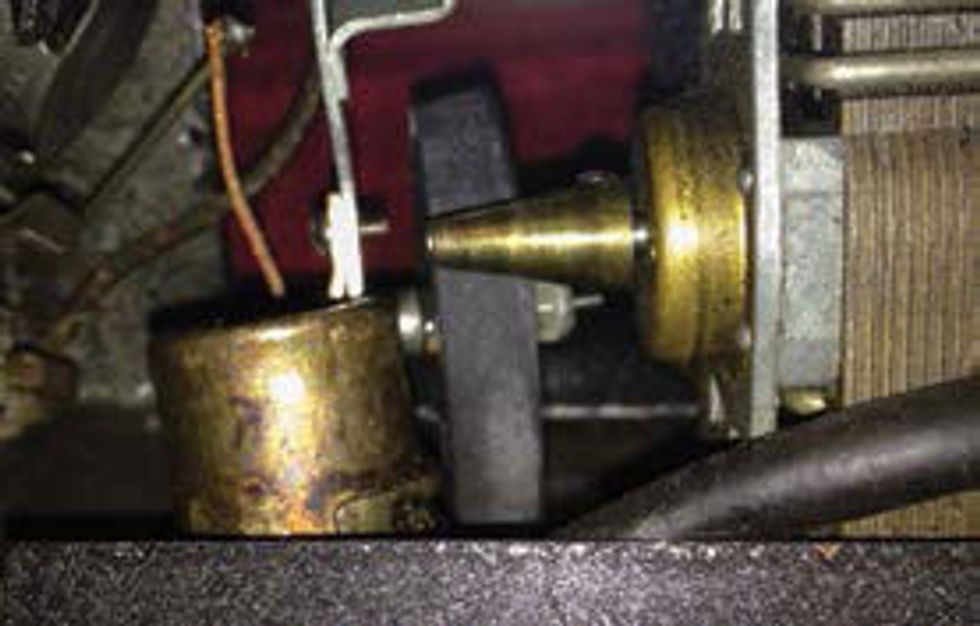The very first stand-alone effects unit for guitar was the DeArmond 601 Tremolo unit, devised in 1946 and more widely available in 1948. (A review in Music Trade Review in 1941 mentions two Story & Clark pianos equipped with DeArmond tremolos, guitar tremolos surfaced later.) One of the first guitarists to get their hands on one was legendary Bo Diddley. He used it on his first and only No. 1 hit, the polyrhythmic, bump-and-grind shuffle “Bo Diddley” for Chess Records in 1955. The uneven fuzzy warble of the DeArmond 601 trem pedal trailing Diddley’s provocative clave rhythm cemented the signature Bo Diddley beat, which was the rock that roll was laid on. Other famous users of the DeArmond 601 include ZZ Top’s Billy Gibbons on “Zipper Job” and “Hairdresser,” Muddy Waters’ on “Flood,” and Mr. Twang Duane Eddy’s on “Rebel-’Rouser.”
The seminal stompbox seems meek and mild with its granite-like exterior and simplistic 2-knob control layout, but underneath the hood hides a complex mechanism. The tremolo effect works by reducing the signal from the guitar—several times a second—to the amp. For the DeArmond 601, the guitar’s input signal is grounded through a water-based, electrolytic hydro-fluid located in a canister inside the unit. (Current DeArmond 601 users refill the canister with Windex.) Within the canister, insulated from the body, is a pin that’s connected to the incoming guitar signal. When activated, a running motor shakes the canister, causing the hydro-fluid to stir and splash against the pin causing the guitar signal to ground. Thus, creating the DeArmond’s signature watery, liquid tone.
“I first heard of these in an old interview with Billy Gibbons,” says Chris Gray, owner of this DeArmond 601 tremolo unit. Since the Reverend has been known to weave a tale or two, Gray did some homework on the grandfather of effects and realized the best way to decipher the truth from lore was to own one. After a few months scouring eBay, Gray landed one with a winning bid of just over $200 for an all-original, fully-functioning, late-’40s DeArmond tremolo. (The only thing he’s had to replace is the power cord.) Upon arrival, he was taken aback at how small yet indestructible the fist-sized machine was compared to most modern-analog pedals. But the real shock value was in its sound.
“The DeArmond 601’s tone is a time machine back to the ’50s—it’s an ancestor of rock ’n’ roll with its dusting of grit and varying depth,” says Gray. “This is not a subtle effect—it adds all its personality to your sound whether you’re ready for it or not, so when I want to add some low-down stank to a track, I just plug it into a small tweed or Supro and let it take me where it wants to go [laughs].”
A special thanks to Chris Gray and Daniel Formosa (https://danformosa.com/dearmond/) for the opportunity to feature this fine piece of gear and its story.
Got some gear that would make a great Gear of the Month? Then email pics and its story to us at gotm@premierguitar.com.


























